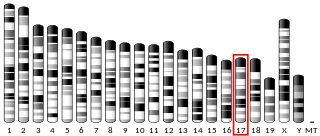
Sphingolipids are a class of lipids containing a backbone of sphingoid bases, which are a set of aliphatic amino alcohols that includes sphingosine. They were discovered in brain extracts in the 1870s and were named after the mythological sphinx because of their enigmatic nature. These compounds play important roles in signal transduction and cell recognition. Sphingolipidoses, or disorders of sphingolipid metabolism, have particular impact on neural tissue. A sphingolipid with a terminal hydroxyl group is a ceramide. Other common groups bonded to the terminal oxygen atom include phosphocholine, yielding a sphingomyelin, and various sugar monomers or dimers, yielding cerebrosides and globosides, respectively. Cerebrosides and globosides are collectively known as glycosphingolipids.

Lipid signaling, broadly defined, refers to any biological cell signaling event involving a lipid messenger that binds a protein target, such as a receptor, kinase or phosphatase, which in turn mediate the effects of these lipids on specific cellular responses. Lipid signaling is thought to be qualitatively different from other classical signaling paradigms because lipids can freely diffuse through membranes. One consequence of this is that lipid messengers cannot be stored in vesicles prior to release and so are often biosynthesized "on demand" at their intended site of action. As such, many lipid signaling molecules cannot circulate freely in solution but, rather, exist bound to special carrier proteins in serum.

RAC(Rho family)-alpha serine/threonine-protein kinase is an enzyme that in humans is encoded by the AKT1 gene. This enzyme belongs to the AKT subfamily of serine/threonine kinases that contain SH2 protein domains. It is commonly referred to as PKB, or by both names as "Akt/PKB".
In enzymology, sphingosine N-acyltransferases (ceramide synthases (CerS), EC 2.3.1.24) are enzymes that catalyze the chemical reaction of synthesis of ceramide:

Tristetraprolin (TTP), also known as zinc finger protein 36 homolog (ZFP36), is a protein that in humans, mice and rats is encoded by the ZFP36 gene. It is a member of the TIS11 family, along with butyrate response factors 1 and 2.

DnaJ homolog subfamily A member 1 is a protein that in humans is encoded by the DNAJA1 gene.

Cell division cycle 7-related protein kinase is an enzyme that in humans is encoded by the CDC7 gene. The Cdc7 kinase is involved in regulation of the cell cycle at the point of chromosomal DNA replication. The gene CDC7 appears to be conserved throughout eukaryotic evolution; this means that most eukaryotic cells have the Cdc7 kinase protein.

Alpha-N-acetylneuraminide alpha-2,8-sialyltransferase is an enzyme that in humans is encoded by the ST8SIA1 gene.

Hyaluronan synthase 1 is an enzyme that in humans is encoded by the HAS1 gene.

Ceramide glucosyltransferase is an enzyme that in humans is encoded by the UGCG gene.

TFIIA-alpha and beta-like factor is a protein that in humans is encoded by the GTF2A1L gene.

Hyaluronan synthase 3 is an enzyme that in humans is encoded by the HAS3 gene.

Fibroblast growth factor 6 is a protein that in humans is encoded by the FGF6 gene.

Lactosylceramide 4-alpha-galactosyltransferase is an enzyme that in humans is encoded by the A4GALT gene.

Suppressor of cytokine signaling 6 is a protein that in humans is encoded by the SOCS6 gene.

DnaJ homolog subfamily C member 1 is a protein that in humans is encoded by the DNAJC1 gene.

Ceramide synthase 2, also known as LAG1 longevity assurance homolog 2 or Tumor metastasis-suppressor gene 1 protein is an enzyme that in humans is encoded by the CERS2 gene.

Ceramide synthase 3 (CersS3), also known as longevity assurance homologue 3, is an enzyme that is encoded in humans by the CERS3 gene.
Ceramide synthase 4 (CerS4) is an enzyme that in humans is encoded by the CERS4 gene and is one of the least studied of the ceramide synthases.
Ceramide synthase 5 (CerS5) is the enzyme encoded in humans by the CERS5 gene.

















